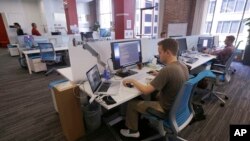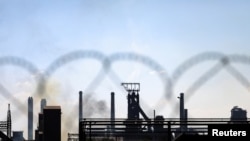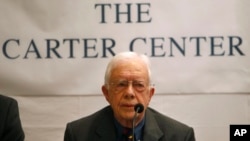Business and Technology
Recession Lowers Career Arcs - UN

A global economic slowdown will force more workers into accepting lower quality, poorly paid jobs in 2023, while inflation gobbles up real term wages, the United Nations warned Monday.
Global employment grew by 2.3 percent last year, but is expected to expand by just one percent this year, to nearly 3.4 billion people with work.
The projected rise is down on the 1.5 percent the International Labor Organization had previously predicted, adding to the gloomy outlook.
"The slowdown in global employment growth means that we don't expect the losses incurred during the Covid-19 crisis to be recovered before 2025," the ILO's research chief Richard Samans said in a statement.
Global unemployment is projected to reach 208 million people this year, an unemployment rate of 5.8 percent.
The projection is up from 205 million in 2022, with the ILO saying most of the shock of the economic slowdown has been absorbed by "rapidly falling real wages" due to accelerating inflation, rather than job losses.
Global unemployment was at 192 million in 2019 before surging to 235 million in 2020 as the Covid pandemic kicked in.
Meanwhile the global jobs gap stood at 473 million in 2022.
The ILO said deficits in decent work had been worsened by multiple, overlapping crises, including Russia's war in Ukraine, emerging geopolitical tensions, an uneven recovery from the Covid-19 pandemic and continuing supply chain bottlenecks.
"Together, these have created the conditions for stagflation -- simultaneously high inflation and low growth -- for the first time since the 1970s," the agency said in its annual World Employment and Social Outlook report.
ILO director general Gilbert Houngbo said the recovery from the Covid-19 pandemic was particularly patchy in low- and middle-income countries, and was further hampered by climate change and humanitarian challenges.
"Projections of a slowdown in economic and employment growth in 2023 imply that most countries will fall short of a full recovery to pre-pandemic levels in the foreseeable future," the former prime minister of Togo said in the report.
"Worse still, progress in labor markets is likely to be far too slow to reduce the enormous decent work deficits that existed prior to, and were exacerbated by, the pandemic."
This number comprises unemployment plus those who want work but are not seeking a job, either due to being discouraged by previous failed attempts or having other obligations such as care responsibilities.
The 2022 global jobs gap was around 33 million above the 2019 level, with a rate of 15 percent for women and 10.5 percent for men.
"The current slowdown means that many workers will have to accept lower quality jobs, often at very low pay, sometimes with insufficient hours," the ILO said.
The report said people aged 15 to 24 were facing "severe difficulties" in finding and keeping decent employment.
The ILO called for an investment surge in education and training, saying two-thirds of the global youth labor force was "without a basic set of skills", which limited their job prospects and pushed them into lower-quality work.
Around two billion workers worldwide were in informal employment last year.
"Given the substantial rise in uncertainty regarding the future course of the global economy, employment expansion is fastest among informal workers," the ILO said, with the informal sector driving most of the Covid-19 employment recovery.
In 2022, an estimated 214 million workers, or 6.4 percent of all those employed, were in extreme poverty, earning less than the equivalent of $1.90 a day.
The report said the long-term slowdown in productivity growth in advanced countries had spread to major emerging economies - "a matter of much concern" since growth in productivity could combat the concurrent crises in purchasing power, well-being and ecological sustainability.
See all News Updates of the Day
Africa News Tonight: DRC, US in talks on trade and security, concerns of civil war risk in South Sudan, tariff talk rattles stock markets
Africa News Tonight: Summit focuses on Africa energy, WFP warns of hunger in southern Africa, UNICEF says fighters in Sudan assault children
Africa News Tonight: DRC president rejects talks with M23, Trump addresses Congress, US auto tariffs may shake up Nigerian car market
Africa News Tonight: Tunisia breaks with IMF, Nigeria reviews anti-terrorism plans, Israelis mourn deaths as ceasefire deadline approaches
Africa News Tonight: Debt relief on G20 finance ministers’ agenda, US risks losing business in Africa, MSF closes operations in Sudan camp
Africa News Tonight: Kenya works to block mpox spread, Nigeria moves closer to BRICS, China seeks to build support in Africa for its goals
Africa News Tonight: MSF leaves Khartoum hospital, Somalia, Ethiopia mend ties, steel maker quits South Africa in face of cheap imports
Africa News Tonight: Fears grow about freed prisoners in Syria, nations seek new defense strategy, Seychelles sees great-power competition
Africa News Tonight: FBI broadens probe in New Orleans attack, African nations struggle with debt, Carter effort led to landmark peace deal
Africa News Tonight: Carter funeral plans underway, Guinea opposition will not recognize military rule, Apple denies using conflict minerals
Africa News Tonight: Mahama officially declared Ghana winner, no clear leadership in Syria, South African clothing tariffs please unions
South Sudan in Focus: Juba road ban worries boda boda drivers, Kenyan deputy president faces impeachment, data helps improve public services
Africa News Tonight: Saied dominates in Tunisia election, China drives into South Africa auto market, Kenyan runner suspended over drug test
Africa News Tonight: Displaced communities at risk of mpox, Tunisia’s Saied shakes up cabinet, sun-powered tractor debuts in Malawi
Restaurant with Robot Services Causes Excitement in Nairobi
In Nairobi, a new restaurant is generating business and buzz – not just because of the food, but because of the staff. Robots serving dishes is the main attraction for diners who flock to the Robot Café. Juma Majanga reports from Nairobi, Kenya.

















